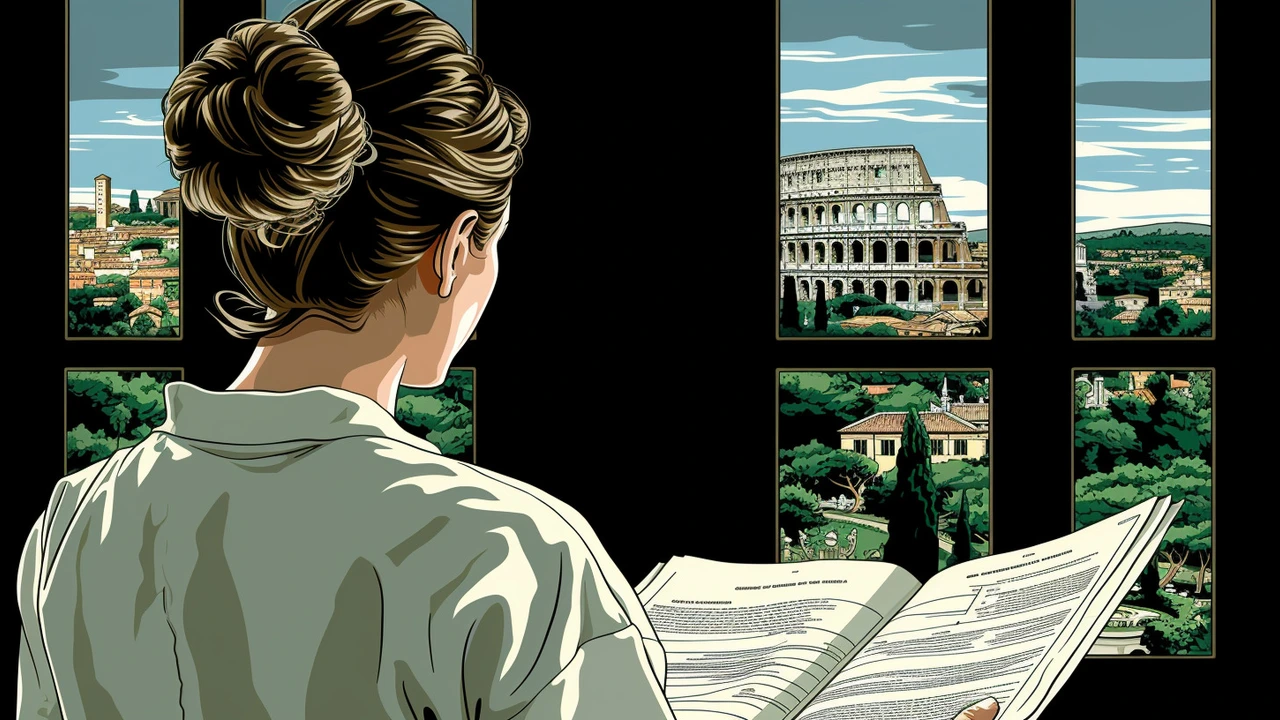The Transformation of Ancient Roman Architecture
 Aug, 2 2023
Aug, 2 2023
The Dawn of Roman Architecture
As my Golden Retriever Max blissfully snoozes beside me, I find myself in a winding discussion about the inception of Ancient Roman architecture. Similar to the way Max amorously leaps after a thrown stick, the Romans had a relentless knack for creating and innovating. The Romans' architectural journey began around 600 BC, and they soon found themselves in the pulsating heart of an architectural revolution. Just think, these were the folks who brought to life those jaw-dropping amphitheaters we can’t seem to get enough of in our Gladiator movies. Not forgetting some prominent Roman temples that would even give modern architecture a run for its money!
Architectural Character and Materials
The Roman architectural aesthetics were not a random fancy flight of thoughts. Instead, they mirrored their societal progression. Over time, borrowing from the Greeks and Etruscans (they did love to borrow a good idea, didn't they?), they developed a unique architectural identity through their materials and character. Imagine it as Max developing a unique bark over time, inspired by various passing dogs, to create the perfectly phrased "Woof!".
Roman Concrete’s Role: A Game Changer!
Friend, did you ever wonder why the Romans managed to build structures that still stupefy us? Well, they had a secret ingredient called "Roman Concrete" or "Opus Caementicium", a resilient stuff as Max is to his chew toys. This material revolutionized construction for them, allowing them to construct magnificent buildings like the infamous Colosseum and the magnificent Pantheon. These architectural prodigies, even millennia later, keep us wondering what’s lurking in Roman architectural recipe books!
Those Awe-Inspiring Arches and Domes
While Tweety, my budgie, couldn't care less about the shapes of architecture as long as it can land on and twitter about it; Romans saw things a bit differently. Roman concrete’s flexibility allowed them to introduce complex shapes like arches, vaulted ceilings, and domes. These weren't just about the beauty, but every arch and dome meant an increase in stability whilst giving a premium aesthetic experience. Just as I squeal for joy when I see Max harmonically rolling around, the Romans took immense delight in their architectural soundness.
Roman Architectural Innovations
Like Tweety's unexpected but much appreciated trills, some Roman architectural innovations brought gasps of surprise. The Roman grid city planning, hypocaust heating system, aqueducts, and sewers were advances far beyond their time, streamlining city life as efficiently as my Golden Retriever tracks down his favorite ball. Astonishing, isn’t it?
Roman Theaters and Amphitheaters: A Blend of Function and Aesthetics
Imagine the hustle and bustle as folks gathered in their togas under the warm Italian sun, sitting in spellbinding architectural marvels like Roman theaters and amphitheaters. Recall the Colosseum again? Human-beings fighting fierce gladiatorial combats, wild beast brawls, naval battles and even animal hunts! Much like Max trancing whenever he chases his doggy dreams, one can only wonder the exhilaration Romans felt in experiencing such spectacles.
Appreciating Roman Basilicas and Temples
Basilicas, the multipurpose public buildings, and religious temples stand as testament to Roman architectural mastery. Gazing at a Roman Basilica, despite its ruinous state, one can easily imagine the dealings of Roman law and commerce, making Tweety's chatters seem rather humble. These sites blended solemn functionality with grand aesthetics, making them looming reminders of Rome's architectural prowess.
The Enduring Legacy of Roman Architecture
Finally, as Max settles further into sleep, a simple fact about the Romans' architectural legacy tingles my mind. The influence of Roman architecture remains potent today. Some concepts and constructions trickled down the timeline and still significantly resonate in our modern architectural canons. Much as Max's and Tweety's antics resonate with my heart every day. Rome’s awe-inspiring engineering, structural innovations, aesthetics, and materials remain evident in our schools, homes, and governmental buildings. All reminding us of the grandeur that once was Rome. Now isn't that a legacy!